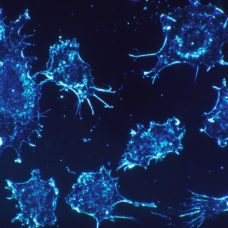Quantum physics is the fundamental theory of matter and its interaction with forces on an infinitely small level, but it remains shrouded in a “quantum” veil, exacerbated by the uncertainty principle of Heisenberg. Now, a theoretical physicist has created an algorithm that could provide strong evidence that the quantum state is a “state of reality” and not a state of knowledge.
George C. Knee developed an algorithm to test the quantum state of particles.Click To TweetNothing is Real Until we Look at it!
Established during the first half of the 20th century, our quantum theories now pervade modern science. They have helped to describe various phenomena, where the laws of classical physics seem inadequate.
Quantum theory is also full of mysteries, counterintuitive concepts, and paradoxes that challenge our understanding of reality. In many cases, quantum physics considers the state of matter to be dependent on the observer. The thought experiment of Schrödinger’s Cat explains that as long an object is not measured (when there is no observer), it can be in two states at once.
The quantum state has divided the founding fathers of quantum theory, and legions of physicists after them. While Niels Bohr thought it was “ontic”, or a state of reality, Einstein, however, argued that it was “epistemic”, a state of knowledge, or an effective description of reality. The debate has been ongoing ever since.
New Approach to Demonstrate the Reality of the Quantum State
Everyday objects are in a well-defined state at any given moment. A car, for example, has quantifiable properties (position, speed, and energy). However, for microscopic objects, the principles of classical mechanics no longer hold. Unlike the car, an electron can have more than one speed, or be at more than one place at the same time (the quantum superposition).
If the quantum state of a particle is ontic, that means that the particle “really” has more than one state, not that it only gives that epistemic impression due to our inability to prepare the particle. George C. Knee, a theoretical physicist at the University of Oxford and the University of Warwick, building on the superposition principle, created an algorithm to design tests that could provide evidence that the quantum state is a state of reality (ontic).
In an article published in New Journal of Physics, Knee considers the different quantum states as distributions on the possible states of reality. Any overlap between these distributions would then indicate that the reality states of a particle are limited. On the contrary, if there is no overlap, then the particle must have two or more states at the same time (ontic view). Also, if there is some overlap, the particle might be in a state in the overlap area, and we can’t differentiate between the two possibilities because of our human limitation (epistemic view).
Knee’s work offers a new way to conduct experiments and restrict possible interpretations of the quantum state with fewer experimental resources and in less time.











Comments (0)
Most Recent